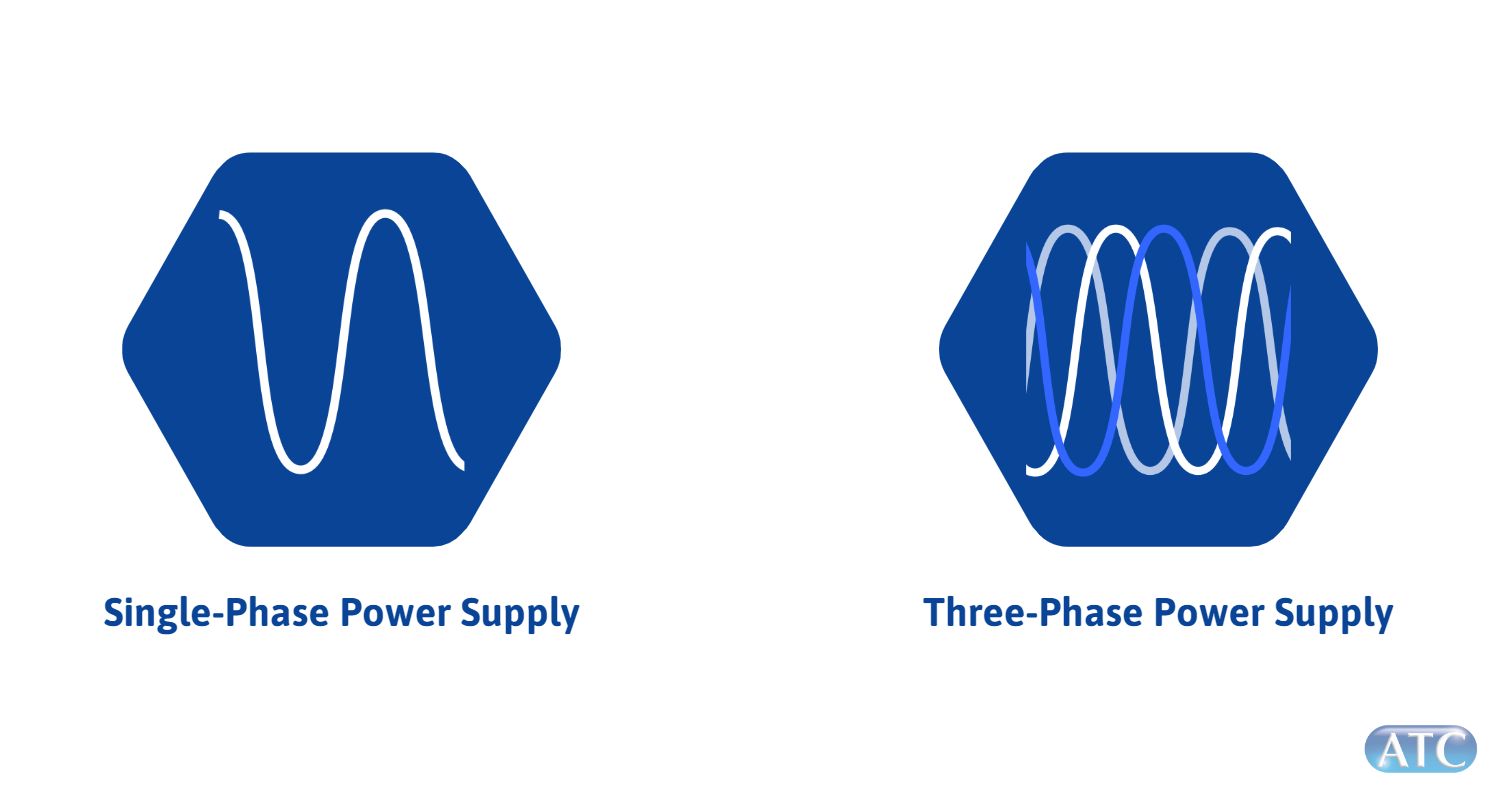To answer this question, it is important to understand the
differences between how single- and three-phase power supplies work, and what the
differences are between them. The following definitions will also be useful:
- A ‘phase’ when discussing power supply, is the alternating
current, or voltage along a wire. During one phase, the wave starts at zero,
grows to a peak, decreases back to zero, reverses and reaches a peak in the
opposite direction before returning to zero. One cycle is 360°
- Voltage is the pressure from an electrical circuit’s
power source.
- Frequency is the rate at which the current of
electricity alternates direction per second.
Single-phase power supplies consist of one phase wire, and
one neutral wire. The phase wire carries the load, and the neutral wire is a
returning path for the current. In single-phase systems, power supply
fluctuations occur as the power wave peaks and dips at 90°
and 270°.
Because of these fluctuations, at points in the cycle power delivery is at
maximum, whilst at other points delivery is less than optimal. Single-phase
power supplies may reach a voltage of 230V.
Single-phase power supplies are usually intended for
domestic supplies, as most appliances within residential homes only require a
small amount of electricity.
However, single-phase power supplies cannot run heavy equipment.
They are also incapable of starting some motors, due to an absence of the
initial torque required. In these instances, a motor started will be required
to ensure smooth running of the motor.
Three-phase power supplies share the load across three phase
wires, which are arranged to be 120° apart. This means that the three
phases of power peak in voltage at different points throughout the complete
cycle, there are no peaks and dips, so there are no fluctuations in power
supply. Three-phase power supplies can carry up to 460V.
Three-phase power supplies can run large machinery effectively.
No additional starters are required to run motors as there is sufficient power
to provide the necessary torque.
Three-phase power supplies are less common in general, and
have less uniformity, whereas single-phase 208-230V 50/60Hz can be found almost
anywhere.
However, three-phase power supplies can provide twice the power with
the same current when compared with single-phase whilst only requiring one more
wire. This then saves on electrical costs and operating costs. Use of
three-phase power supplies can also be considered as ‘future-proofing’ as you
are able to scale for future growth.
Due to the high voltage of three-phase power supplies,
additional insulation is required.
Some three-phase power supplies have a fourth wire, a
neutral. A neutral wire in a three-phase power supply allows the system to use
a higher voltage whilst supporting lower voltage, single-phase appliances.
